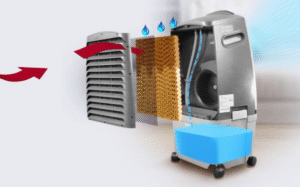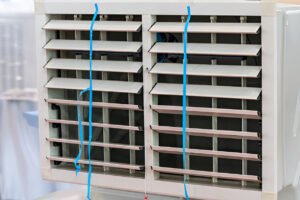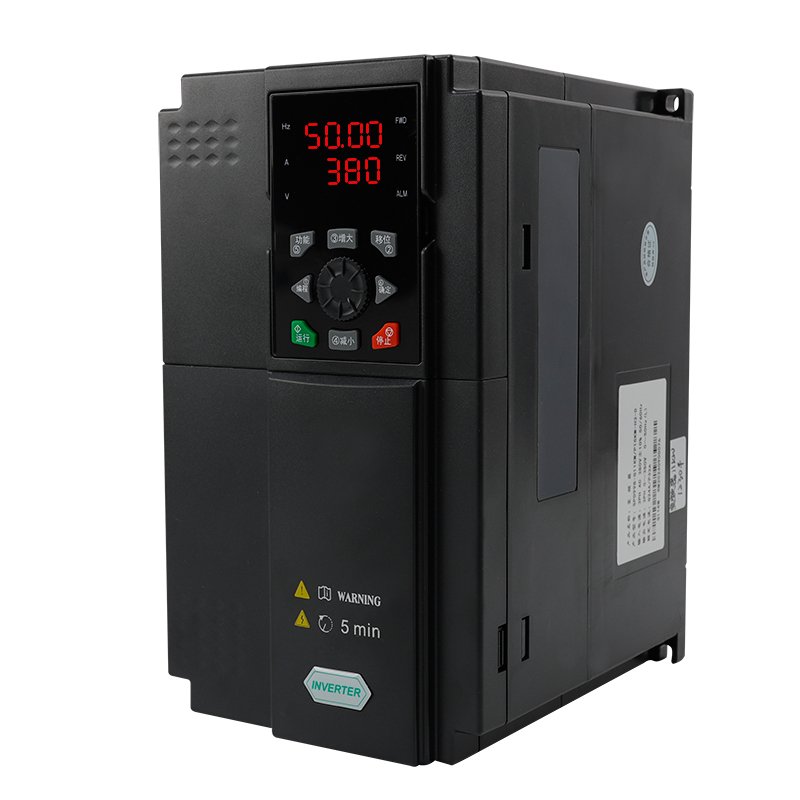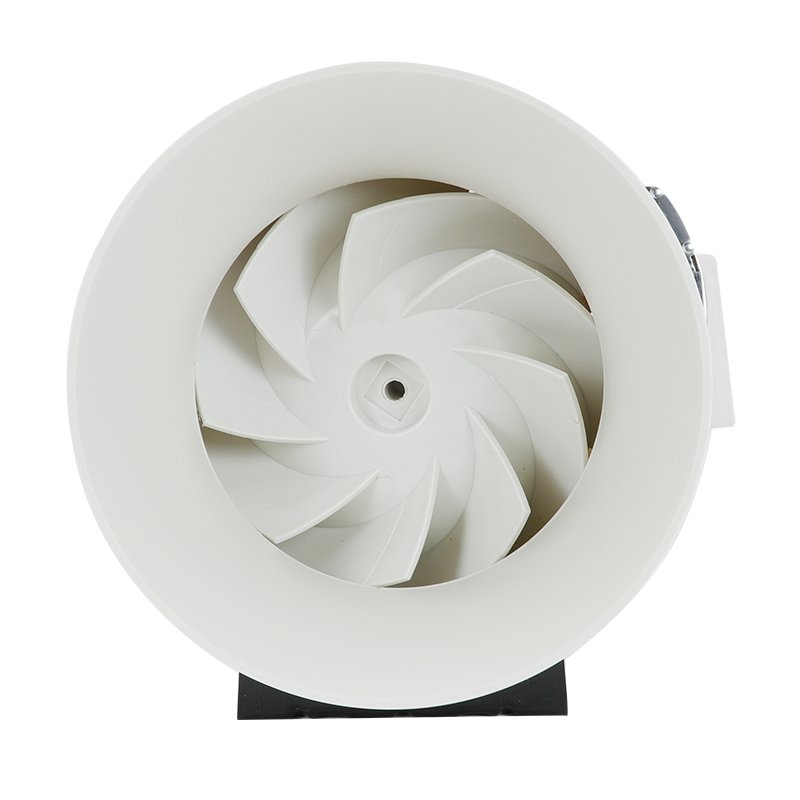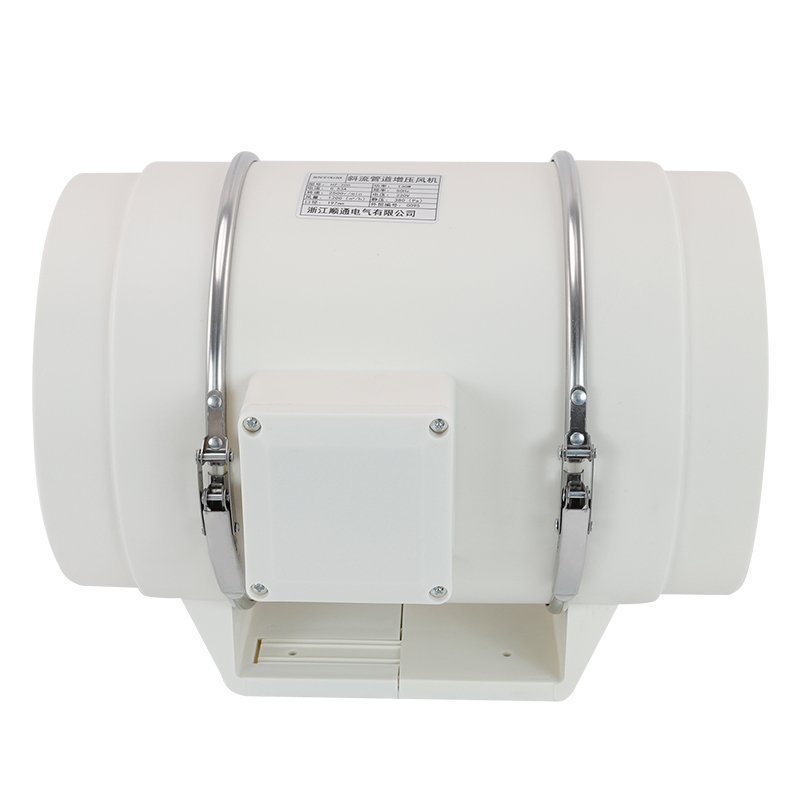With global warming, the frequency and intensity of hot weather have increased significantly, and so has the demand for efficient and fast cooling. In this dire situation, Portable Air Cooler are gaining popularity among more and more consumers as an economical and environmentally friendly alternative to air conditioning with low consumption and flexible usage. It not only provides an instant cooling experience but also avoids the high energy consumption and installation costs of traditional air conditioners. After reading this article, you may never want to buy an air conditioner again!
Reason 1: Portable Air Coolers Are Incredibly Energy-Efficient
Imagine a portable air cooler that no longer makes your heart beat faster with your monthly electricity bill but instead makes it easy to use without spending a lot of money on electricity! Unlike traditional air conditioners, this device consumes a surprisingly low amount of energy, often requiring only a quarter or less of the electricity consumed by an air conditioner. For a home or business in South America, this can mean savings of up to 30% on your monthly electricity bill.
Take a supermarket as an example: if it spends $200 per month on electricity with a conventional air conditioner, switching to a portable air cooler could lower that expense to just $50. In this way, you will not only reduce your operating costs but also contribute to environmental protection. Who says saving energy can’t be fun? Try a portable air cooler, and your wallet will thank you!
South American Electricity Cost Calculation Example
| Country | Avg. Electricity Cost (USD/kWh) | Traditional AC Monthly Cost* | Portable Cooler Monthly Cost* | Monthly Savings | Savings Percentage |
| Brazil | $0.15 | $108.00 | $28.80 | $79.20 | 73.3% |
| Argentina | $0.02 | $14.40 | $3.84 | $10.56 | 73.3% |
| Colombia | $0.21 | $151.20 | $40.32 | $110.88 | 73.3% |
| Chile | $0.17 | $122.40 | $32.64 | $89.76 | 73.3% |
| Peru | $0.19 | $136.80 | $36.48 | $100.32 | 73.3% |
| Uruguay | $0.24 | $172.80 | $46.08 | $126.72 | 73.3% |
Calculation assumptions:
- Traditional AC: 1.5 kW, 8 hrs/day, 30 days
- Portable Cooler: 0.4 kW, 8 hrs/day, 30 days
- Formula: Monthly Cost = Power (kW) × Hours × Days × Electricity Cost
Reason 2: You Don’t Need Complex Installation
Unlike traditional air conditioners that require mounting, vents, and custom wiring to install, portable air coolers are simple to operate and do not require expensive technician visits to install. Simply place it wherever you want to cool your surroundings and plug it in; it doesn’t get easier than this.
Reason 3: Air Coolers Are More Portable and Versatile
You can easily drag the portable air cooler to use anywhere, and you can also pack up the device easily; because they are compact, lightweight, and come with wheels, you can not only move the air conditioner to any room you need it in, to your RV, or even for outdoor activities.
In this mixed climate in South America, fixed air conditioners are like flamenco dancers nailed to the wall. The mobility of portable coolers is just right for the diverse scenes from Peruvian beach houses to Chilean vineyards.
Reason 4: Environmentally Friendly Cooling
Unlike other conventional cooling systems, the portable air cooler has no refrigerant gases, so it does not release toxic chemicals into the air. It works according to the principles of the evaporative air cooler system; it produces no emissions due to the system’s low carbon footprint compared to traditional air conditioners.
Reason 5: Dual Function: Cooling + Humidifying
This little machine is a ‘cheat’ for the dry climate of South America-preventing dry skin, dry eyes, and breathing problems. The left hand splashes you with the coolness of the Amazon rainforest, while the right hand delivers a warm mist like maté tea. While traditional air conditioners strip moisture from the air—leaving it drier than Argentine beef jerky-a portable cooler is more like a tango partner, quietly slipping a moisturizer into the palm of your hand as it cools you down.
For example, in Chile’s arid Atacama Desert, a supermarket using air conditioning recorded humidity levels as low as 15%. After switching to a portable air cooler, humidity near the shelves rose to 40%, keeping customers’ skin hydrated and reducing hand cream sales by 23%. Similarly, in Bolivia’s highlands, pharmacies saw fewer respirator mask sales as asthmatic customers found relief simply by standing near evaporative coolers. These devices not only enhance comfort but also support health and well-being in dry regions.
Reason 6: Cost-Effective Purchase & Maintenance
In the South American market, the portable air cooler barato is as affordable and accessible as street food. Compared to traditional air conditioners that can cost hundreds of dollars, the average selling price of this unit is half or even less than that of an air conditioner, so you can get a portable air cooler at a very affordable price. For wholesale buyers, this means lower inventory costs, higher profit margins, and an easier time impressing a customer base on a tight budget.
Maintenance is equally economical and hassle-free. All it takes to keep a portable cooler running efficiently is cleaning the water tank and cooling pads—tasks that require no professional assistance or specialized tools. With minimal upkeep expenses, maintenance costs are often as low as the price of a cup of coffee, whereas air conditioners can demand hundreds of dollars for parts replacement or repairs. Portable air coolers offer a cost-effective solution for both purchase and maintenance, making them an ideal choice for homes and businesses alike.
Reason 7: Perfect for South America’s Climate and Culture
The climate in South America is like a tango, hot one minute, humid the next. Equipped with 360-degree swivel wheels, these devices are as agile as a Brazilian footballer, effortlessly moving from the supermarket’s chilled section to fresh produce aisles—or even into a customer’s car trunk for a camping trip. South Americans can even drag a barbecue grill on a camping trip.
Picture a terrace lunch in Buenos Aires: while a traditional air conditioner requires wall drilling and complex installation, this “mobile oasis” is already cooling the space. Its compact design fits snugly into Rio de Janeiro’s mini-apartments, while its lightweight construction allows shopkeepers in the Andes to carry it upstairs single-handedly. When Colombia’s rainstorms arrive, the cooler transforms into a dehumidifier for drying areas, offering functionality that adapts to any situation. Portable air coolers truly embody flexibility and practicality for South America’s unique climate and culture.
Portable Air Coolers vs. Air Conditioners — A Quick Comparison
| Feature | Portable Air Cooler | Air Conditioner |
|---|---|---|
| Energy Consumption | Low (0.3–0.6 kW/h) – Sips power like caipirinha on a beach | High (1.5–3.5 kW/h) – Gulps electricity like a thirsty capybara |
| Portability | Yes – Rolls smoother than a tango dancer; 360° wheels & lightweight (10–15 kg) | No – Requires permanent installation; wall-mounted units weigh 50–80 kg |
| Humidification | Yes – Adds moisture (ideal for dry climates); prevents “llama wool skin syndrome” | No – Removes humidity; may leave air drier than Patagonian desert winds |
| Setup Complexity | Plug-and-play – Ready in 3 minutes (faster than brewing yerba mate) | Professional installation required – Drilling, wiring, and 2+ hours of labor |
| Purchase Cost | Budget-friendly ($150–$300) – Costs less than a weekend in Cartagena | Premium ($500–$1,200+) – Priced like a VIP ticket to Rio Carnival |
| Maintenance | DIY-friendly – Clean filters monthly; refill like watering plants | Technician-dependent – Annual servicing costs ($80–$200) |
| Noise Level | Gentle hum (45–55 dB) – Comparable to Andean pan flute melodies | Loud (60–70 dB) – Rivals a samba school rehearsal |
| Best For | Outdoor markets, small shops, hybrid climates – Flexibility is its middle name | Large warehouses, permanently sealed spaces – Where mobility isn’t a priority |

Final Thoughts -Should You Switch to a Portable Air Cooler?
After exploring these seven compelling reasons, the answer seems pretty clear: Yes, you should! Portable air cooler offer unmatched energy efficiency, mobility, and versatility, making them a smart choice for businesses and homes. Whether you’re dealing with the dry heat of a South American summer or tackling the challenges of a hybrid living space, this device will meet your cooling needs without breaking the bank or your walls.
Unlike traditional air conditioners, which are often expensive and inflexible, portable air coolers offer dual functionality (cooling + humidification), easy maintenance, and eco-friendly operation. They’re more than just machines; they’re problem solvers that adapt to your lifestyle while saving you money and energy.
FAQ
Q1: Can portable air coolers work in Brazil’s humid regions?
They work best in dry climates but can provide relief in humid areas during drier times or for spot cooling.
Q2: Can portable air coolers replace air conditioners?
Not completely. They’re ideal for energy-efficient spot cooling but lack the power of ACs for large, closed spaces.
Q3: How much water do they consume?
Typically, smaller units use 4 liters per hour, while larger models may consume up to 20 gallons daily.
Q4: Are they hard to maintain?
No! Maintenance is easy—clean the tank weekly, replace pads yearly, and ensure proper airflow.
Q5: Where can I buy the best portable air coolers?
Top brands like Honeywell and Hessaire are available on Amazon, Lowe’s, and Target.


